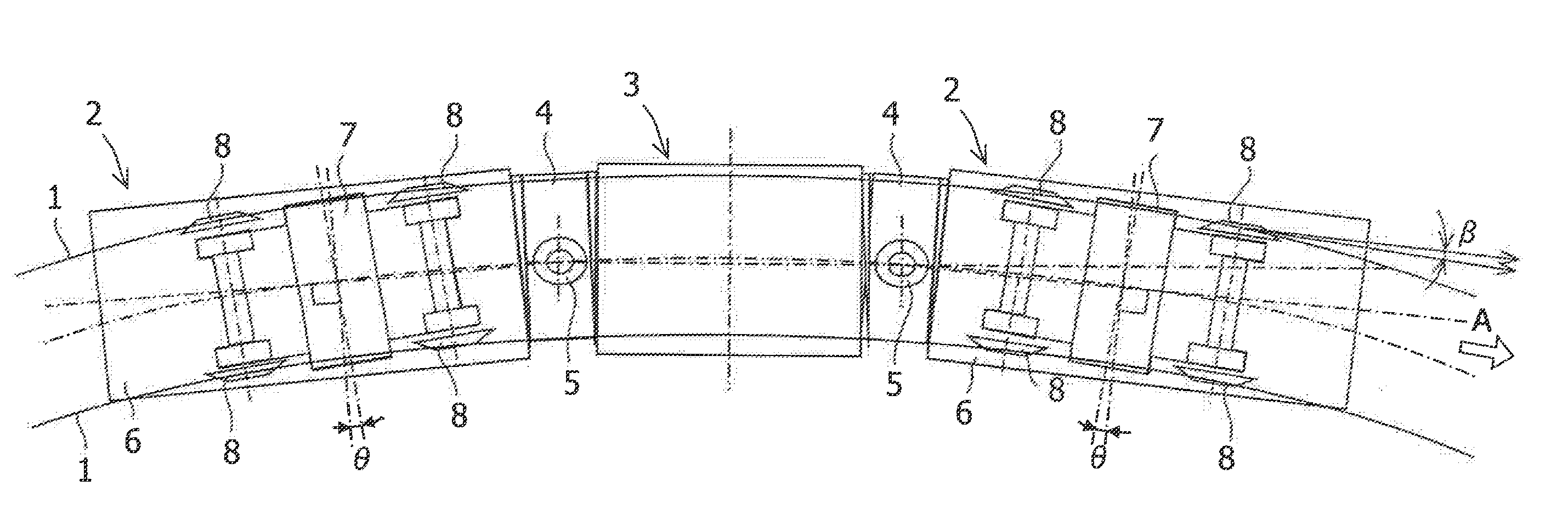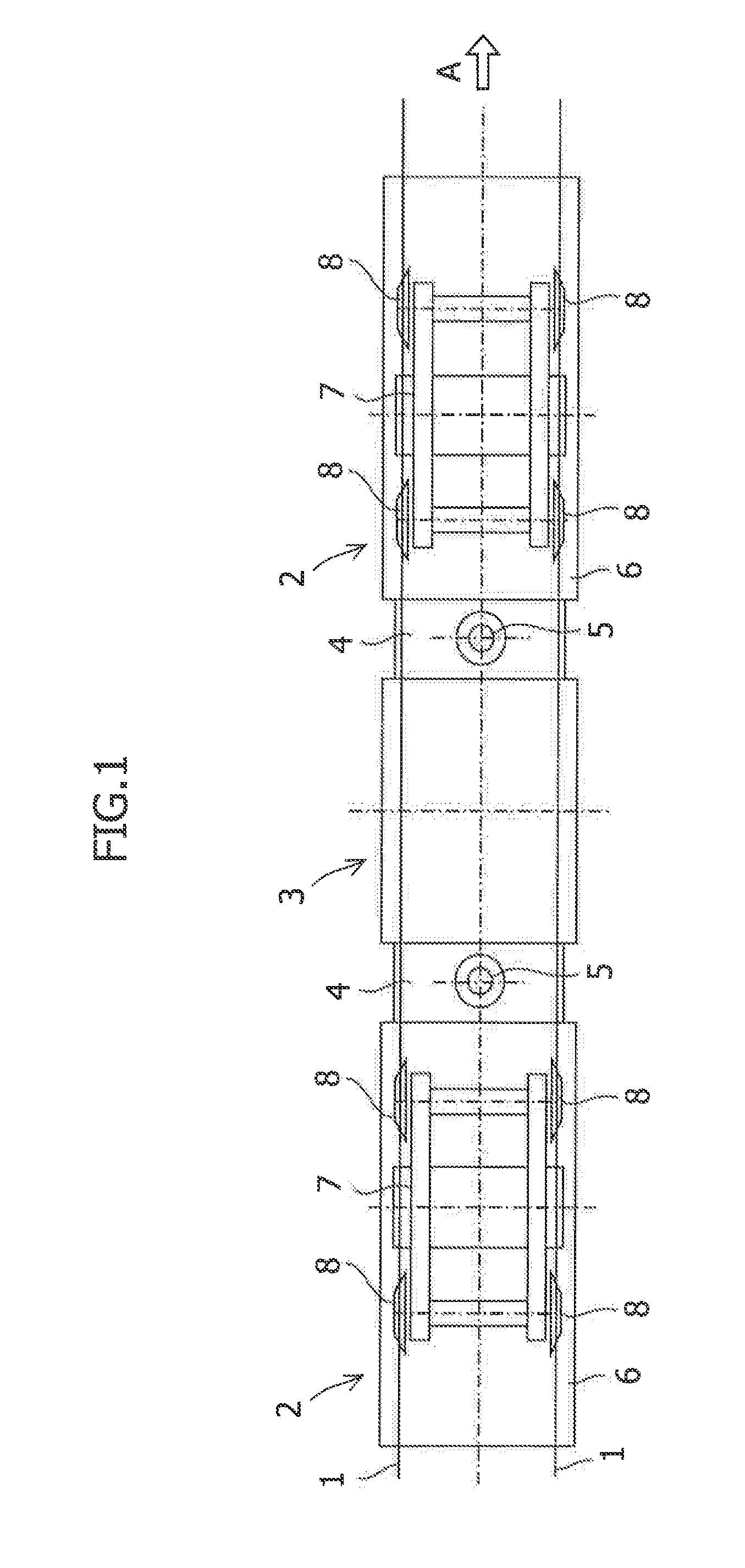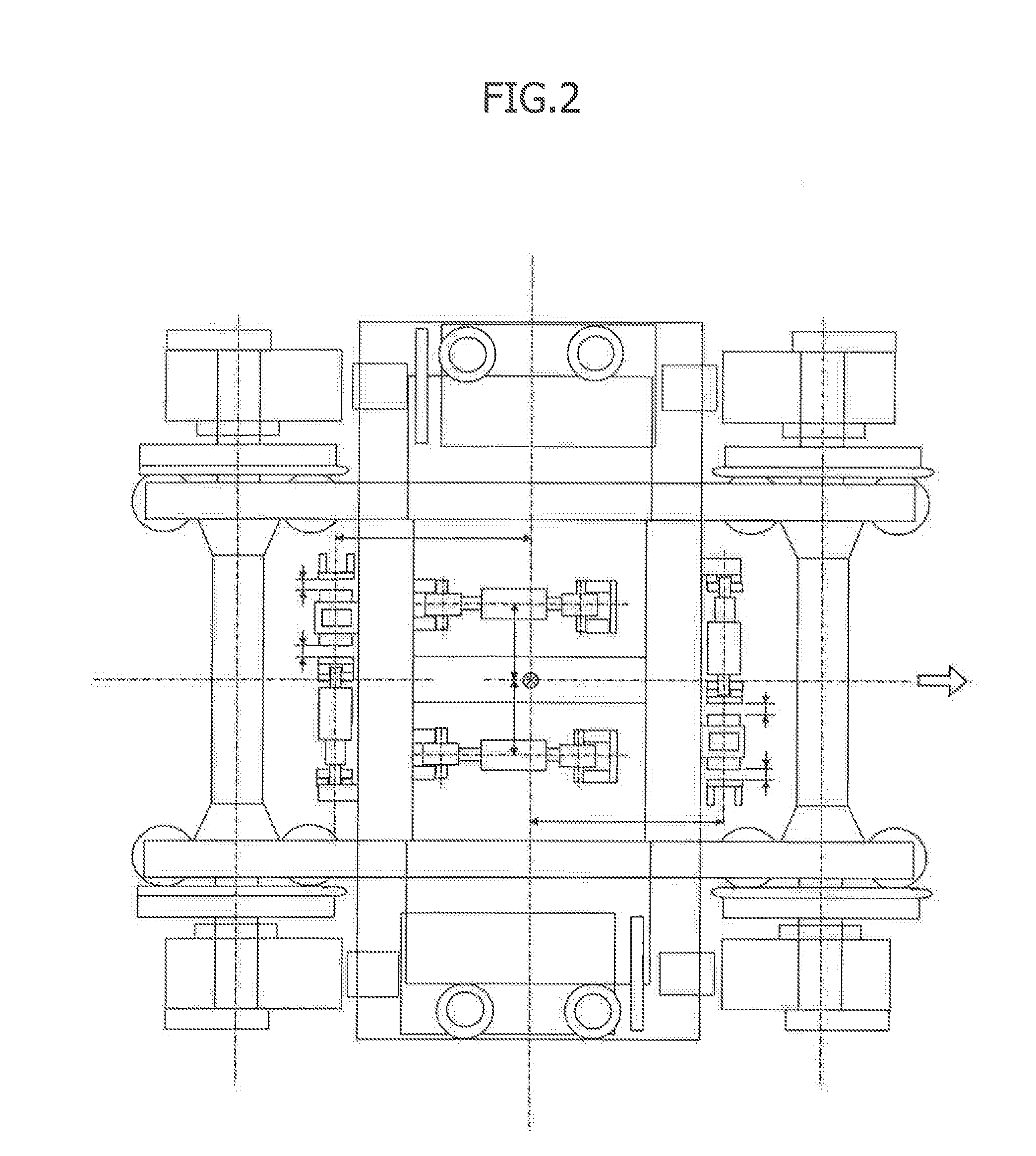Low floor vehicle
a technology of low-floor vehicles and lateral pressure, applied in the direction of locomotives, rail engaging elements, transportation and packaging, etc., can solve the problems of increasing lateral pressure of vehicles, vibration and creaking sounds in vehicles, and affecting bogies that are not easily affected by bogies, so as to prevent vibration and creaking sounds of vehicles, less easily affect bogies, and reduce lateral pressure applied to vehicles
- Summary
- Abstract
- Description
- Claims
- Application Information
AI Technical Summary
Benefits of technology
Problems solved by technology
Method used
Image
Examples
first embodiment
[0029]A low floor vehicle (hereinafter referred to as “vehicle”) in a first embodiment of the present invention is explained below, in the first embodiment, the vehicle is explained using an LRV as shown in FIG. 1 as an example of the vehicle. In the explanation, it is assumed that a traveling direction of the vehicle is a vehicle front. FIG. 1 is a diagram of the vehicle viewed from above. The traveling direction of the vehicle is indicated by the arrow A. The vehicle shown in FIG. 1 includes two front vehicles 2 and one intermediate vehicle 3 traveling on a track 1. As a vehicle composition, the one intermediate vehicle 3 is arranged between the two front vehicles 2. Connecting sections 4 are provided between the front vehicles 2 and the intermediate vehicle 3. Pin connectors 5 are provided in the connecting sections 4 along an axis extending in a vehicle vertical direction. The front vehicles 2 are coupled to the intermediate vehicle 3 to be capable of turning around the pin conn...
second embodiment
[0046]A vehicle in a second embodiment of the present invention is explained below. In the second embodiment, as in the first embodiment, the vehicle is explained using an LRV as an example of the vehicle. A basic configuration of the vehicle in the second embodiment is the same as the configuration of the vehicle in the first embodiment. Components that are the same as those in the first embodiment are explained using the same reference numerals and signs and names as those in the first embodiment. Components different from those in the first embodiment are explained. In the explanation of the second embodiment, it is assumed that a traveling direction of the vehicle is to the vehicle front.
[0047]The structure of the bogie 7 in the second embodiment is explained with reference to the bogie 7 in a linear traveling time state shown in FIG. 6. One traction rod 21 is provided in the bogie 7. The traction rod 21 is arranged along the axis 8c passing the center between the wheels 8 on th...
PUM
 Login to View More
Login to View More Abstract
Description
Claims
Application Information
 Login to View More
Login to View More - R&D
- Intellectual Property
- Life Sciences
- Materials
- Tech Scout
- Unparalleled Data Quality
- Higher Quality Content
- 60% Fewer Hallucinations
Browse by: Latest US Patents, China's latest patents, Technical Efficacy Thesaurus, Application Domain, Technology Topic, Popular Technical Reports.
© 2025 PatSnap. All rights reserved.Legal|Privacy policy|Modern Slavery Act Transparency Statement|Sitemap|About US| Contact US: help@patsnap.com



